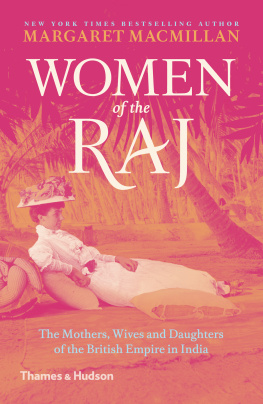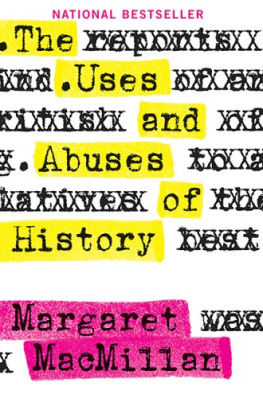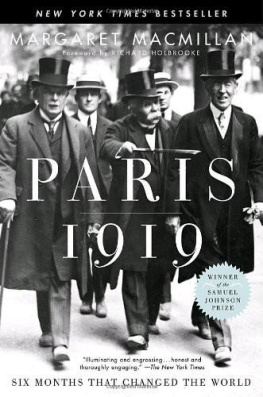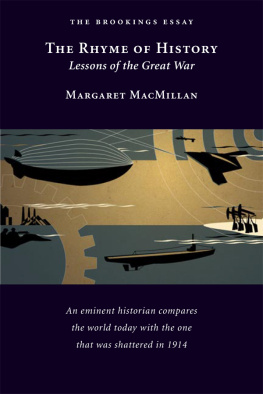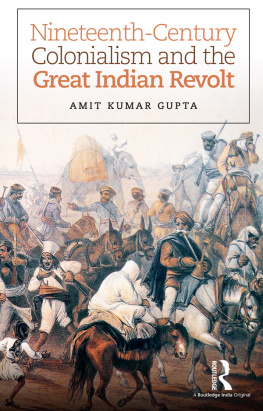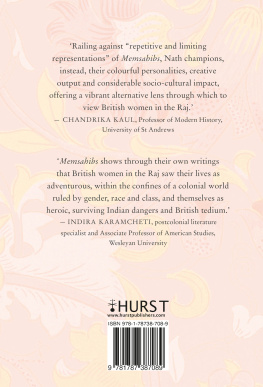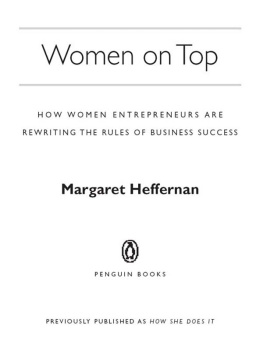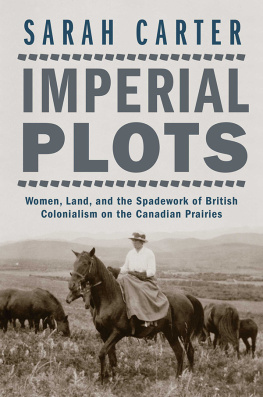


Other titles of interest published by
Thames & Hudson include:
Explorers Sketchbooks: The Art of Discovery & Adventure
Histories of Nations: How Their Identities Were Forged
India: A Short History
See our websites
www.thamesandhudson.com
www.thamesandhudsonusa.com
CONTENTS
Women of the Raj is a historical artefact and I have chosen to leave it pretty much as it was written. I wrote it in the 1980s so it reflects the state of historical investigation as well as my own views and concerns at the time. The history of empire was an old and well-established field, its preoccupations more with the rise and fall of the big western empires than their societies. Womens history was a very new subject of historical inquiry indeed. Since then both fields have expanded and changed and if I were writing my book today it would of course be very different and I would use other terms in places. The book still refers to the Indian Mutiny, for example, where now I would probably write the Great Rebellion or even Indias first war of independence. I have made only a few cosmetic changes and added in some of the choicer bits of the new material I have come across.
Yet I hope that what I wrote all those years ago still has something to say to the present. It deals with questions which matter in our globalized world with its marked differences in wealth and status. How do people adapt to living in a different culture? How does power affect the relations between rulers and ruled? How can human beings overcome the stereotypes about each other? And, so I like to think, it helps us to recover voices from the past.
The book, my first, was published almost thirty years ago when global and transnational history, much less cultural history, the history of food, fashion or the body, were yet to be conceived as fields of study at all. I had very few examples to follow as I studied a largely vanished community. Nor could I call, as later historians have done, on the rich insights offered by the explosion in the last years of the twentieth century and the start of the twenty-first in gender and cultural history or the study of the construction of identities or diasporas. When I tried to understand the British women, the memsahibs, who made their lives in India, I was largely on my own.
True, the British Empire was still the object of historical study and the ways in which it was studied were slowly changing, from examining the process by which so much of the map of the world came to be coloured red, to trying to understand why the Empire had melted away so quickly after the Second World War and, increasingly important, what it had meant for those at the receiving end, its millions of subjects around the world. How had the British established their rule? What were the steps by which India had moved to independence? What were the roots of Indian nationalism? Or and this was a matter of perennial debate had the British Empire benefited India or had India benefited the British? Important questions but the rise and fall of empires was increasingly out of step with what was happening to the study of history in the 1960s and 1970s. When I went to the University of Toronto, Canada was becoming aware of itself as a nation and that meant breaking the ties to what we had once called the Mother Country. We did not want to dwell on our past as a colony. In Britain, where I did my graduate work at Oxford in the late 1960s and early 1970s, the Empire was a matter for regret if not shame. Or it was simply a joke. Its marks lingered on in the monuments to long-forgotten empire-builders or in the uniforms in the second-hand shops or the chutney in corners of grocery stores. Only a few scholars bothered to look at the copious records that remained.
At the time other fields of history seemed more interesting: revolutions the French, Russian, Chinese for example or the development of the working classes. Historians were moving beyond what had once been considered proper history to explore subjects such as childhood, the family, or disease and society. At my own College, St Antonys, one of the fellows was Theodore Zeldin, who was part way through his monumental history of the French with headings such as Ambition and Love or Anxiety and Hypocrisy. Such new types of inquiry, into social groups, ideas, attitudes or gender, were going to permeate and shake up older established fields such as imperial history where I nevertheless remained. And fashionable or not there was no escaping that Western imperialism and the many and varied responses of the colonized are among the key forces shaping modern history. Forces the great currents that sweep through history are only ever part of what I want to consider as a historian. The impact on individuals matters as much to me.
We often choose our subjects or they choose us as a result of our own histories. I am a child of the British Empire. In my childhood many Canadians still looked to Britain as the hub of our world. We sang God Save the King and then God Save the Queen in school and before every performance in the theatre. Both my grandfathers fought in the First World War for the British Army. Perhaps I did my thesis on the British in India because I read Kim and The Jungle Book when I was a child. Perhaps because one grandfather had been in the Indian Medical Service, and we as children played with the ragged skin of the tiger he had shot. My grandmother, who had been a very reluctant memsahib, told us stories of snakes in the bathtubs and scorpions under the beds and boredom at the Clubs. My Indian-born mother, who had much fonder memories from her childhood, talked about the colours and the clash of bangles on the arms of her beloved Indian nurse. And when I went to Oxford, where so many of the proconsuls of Empire had been given their training, there was an Indian Institute, professors who knew much about the subcontinent, and students from India who were fascinated by their own history. At our seminars there were elderly men, often, I realized later, with interesting and distinguished careers who had been in the Indian Civil Service, the Indian Army, or the Indian Political Service.
For whatever reasons, I decided to write a thesis on the British community in India in the decades around the turn of the nineteenth century, when the Raj was at its most pompous and powerful but when the cracks were starting to appear. I wanted to look at who they were, how they lived as a tiny community amid millions on the subcontinent, what assumptions they made about India, and what they thought about what they were doing there. At that point there were only a few studies of that ruling group. Although the name later came to refer to Eurasians they called themselves the Anglo-Indians, which is what I shall use here. They were of British descent, and proud of it, often born in India but, when their families could afford it, educated in Britain. As adults they came back to work and live in India, often generation after generation, but preferred to retire to what they called Home, a British Isles which they scarcely knew.
As I made my way through undergraduate and then graduate history I was also increasingly interested in what it meant to be a woman in a world where the rules and values were still largely set by men. The womens movement and womens history was then in its early stages. Until the 1960s, the study of womens lives, like that of children or gays, had not been a focus of mainstream history. As undergraduates, we studied political history or economic or military history, much of it fascinating. We were interested in how people in the past organized themselves, how they made politics or war. We did not care as much as we do today about what they thought or felt or ate or wore. Always, though, when the preoccupations of the present change, we start to ask different questions of the past. In the 1970s and 1980s, the womens movement, the struggle for civil rights, and the challenges to received wisdom and authority helped to put the past under different spotlights. Historians and this was certainly true in my case tried to re-evaluate the role of women in history and to re-examine the stereotypes that women were merely minor players or onlookers in the past or pale reflections of men.
Next page
